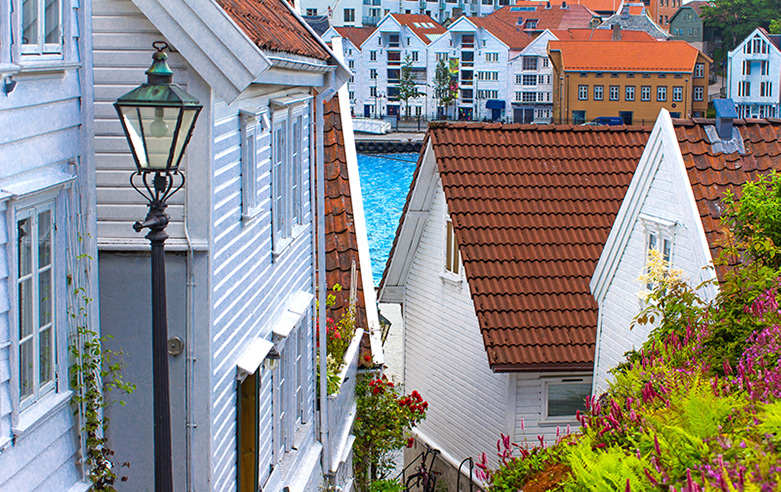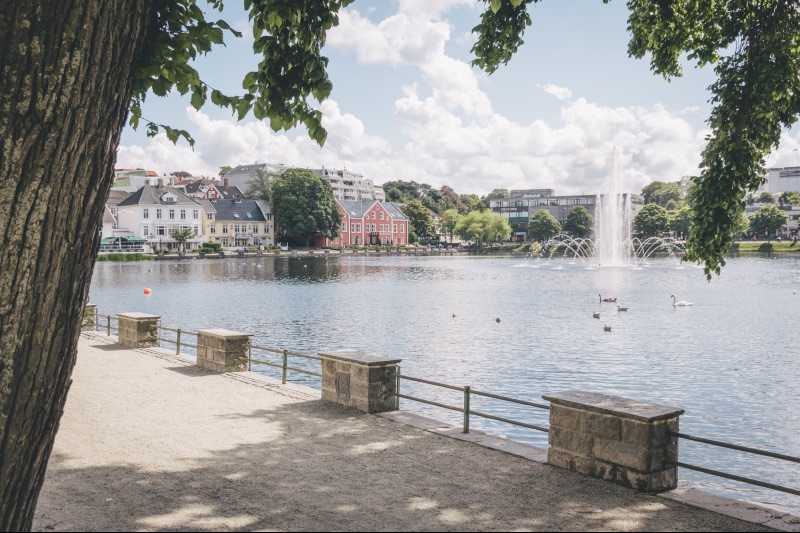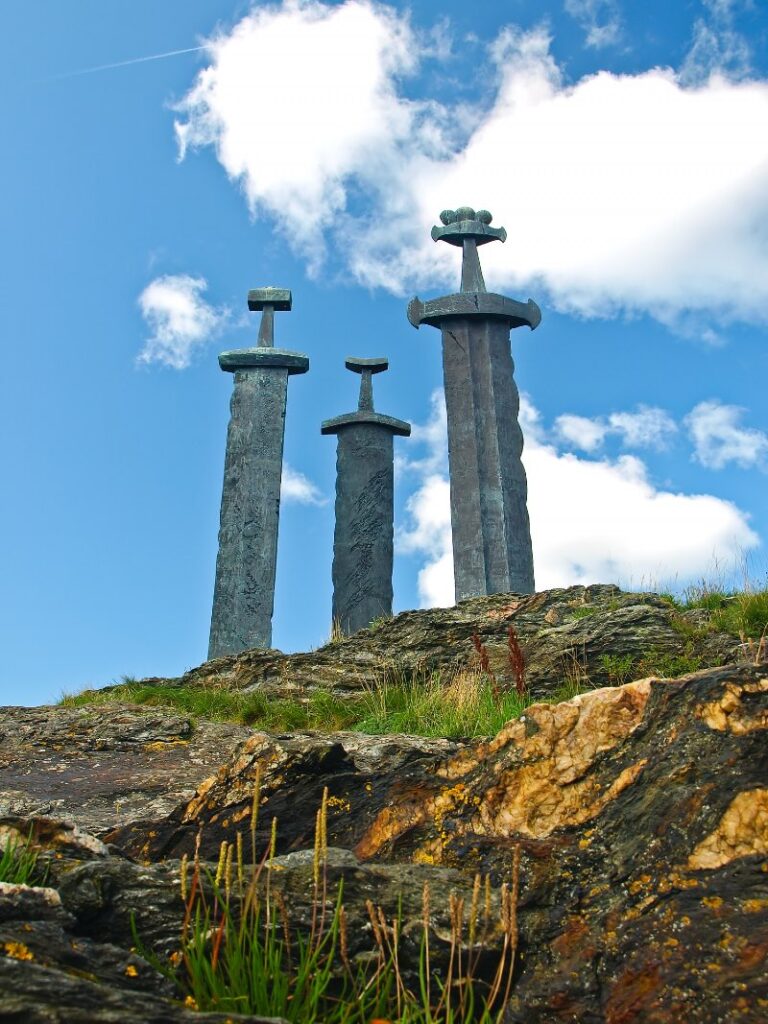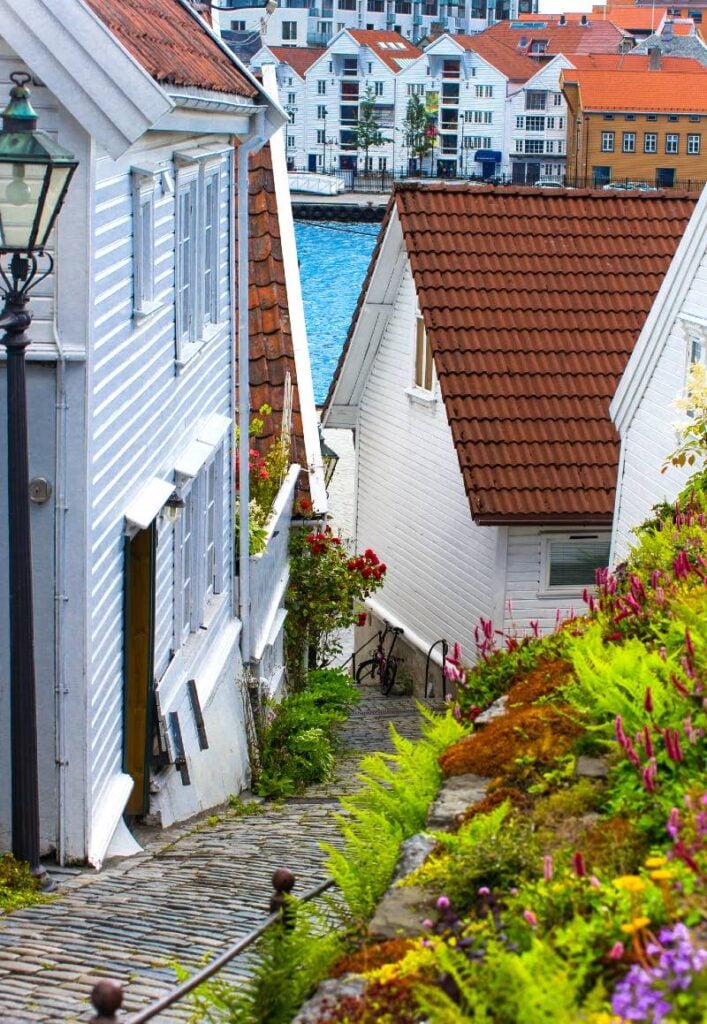
Stavanger is nearly 900 years old and one of the oldest cities in Norway. It's a city that has been built from many years of fascinating history – here is the story of the country’s oil capital.
Stavanger is a city and municipality situated on Norway's south west coast. It's the administrative centre of the county of Rogaland and today the city is the fourth-largest in the country.
The city has an intriguing history from Vikings to petroleum, while its origins as a settlement can be traced right back to the end of the last Ice Age. Here is the story of Stavanger.
Early history
The first settlers in the Stavanger region are believed to have arrived in the years after the last Ice Age. The melting ice around 10,000 years ago brought new peoples to the low-lying coastal areas of the Scandinavian peninsula.
In Norway, Stavanger area was one of the first places in Norway to support a settlement – this likely had much to do with its georgraphy.
The receding ice carved out majestic fjords to the north east of the city and, by contrast, large, open expanses of flat land to the south west of the city. The region of Rogaland in which Stavanger sits is a diverse mix of fjords, lakes, waterfalls, forests, open grasslands and long sandy beaches.

The Battle of Hafrsfjord
Many historians believe that this part of Jæren (the district in which Stavanger is located) was both a military and an economic centre from around the 9th and 10th centuries. This is also a time when the city played host to a major battle that went on to change the face of Norway.
The Battle of Hafrsfjord was a naval conflict that was fought in Stavanger between 872 and 900 – the exact year of the conflict is unknown. The battle resulted in the unification of Norway.
Harald Fairhair (King Harald I) was the victor in the battle at Hafrsfjord, and as a result, the Viking chief declared himself as the first king of Norway. He brought a number of separate kingdoms together under his monarchy.
However, some scholars believe it was a far more complicated process than the outcome of a single battle and that the country’s unification was a process that took centuries rather than years.
On the banks of the Hafrsfjord today, you will find The Swords in the Rock (Sverd I fjell), a landmark that was created by Fritz Røed in memory of the battle.

Origin of the city's name
Over the centuries, the origin of the name Stavanger has been debated and discussed. But one popular belief is that the city’s name is taken from Old Norse ‘Stafangr'. In turn, the word is believed to be the name of the narrow inlet of water in the city centre, an area now known as Vågen.
The first part of the Old Norse name is stafr- meaning ‘staff’ or ‘branch’. While the latter part ‘-angr' can be understood as ‘inlet’ or ‘bay’. This would tie in with the naming of the waterway in the city, a place that was the historical centre in the city. Today, Vågen is home to the oldest part of the city, a tourist hotspot known as Gamle Stavanger.
The history of Stavanger cathedral
Two centuries after the Battle of Hafrsfjord, Stavanger expanded into a market town and a centre for the church administration in the region. Around 1100 to 1150 (estimated), the city’s Cathedral was built. This coincided with Stavanger gaining city status.
The cathedral was intially made out of local timber, but the devastating fire of 1272 raised it to the ground. Later, a new stone building was constructed, and this is the one that stands in the city today.
Read more: Stavanger Cathedral
City development
The fire that tore through the cathedral is also believed to have damaged other parts of Stavanger. In the centuries after the city was rebuilt, the population remained fairly steady but in small numbers. By 1759, the count had increased to 3,337, which is in line with the slow growth in other cities in Norway at that time.
For many years, the sea and Herring industry were major parts of the city’s economy. As were the flat expanses of land around the city which were perfect for farming. To this day, the region of Rogaland supplies many of Norway’s vegetables, including potatoes, carrots and cucumbers.

The 19th century saw a shift to shipbuilding. The abundance of timber available in the region and Stavanger’s key position on Norway’s west coast were ideal. But that soon came crashing down in the early 20th century with the rise of iron shipbuilding.
Stavanger in World War II
There are many stories from the Stavanger region from the time of World War II. On the morning of April 9, 1940, the city’s airport in nearby Sola came under attack from German fighter planes. The airport had only been built three years earlier but was seen as a key stronghold in Hitler’s advances in Norway.
The German air assault gradually increased in strength until the parachute battalion took the airport within hours of the attack. During the conflict, there were several injured Norwegian solders but no fatalities; however, on the German side, there were several injured and dead.
Later that morning, German cargo planes dropped containers full of weapons, ammunition and other equipment. In total, some 300 transport aircraft were used to deliver further equipment and hundreds of German soldiers in Sola.
Just after midday on April 9, the Nazis had marched into the centre of Stavanger with little or no resistance from locals. Although the Germans took the city almost without conflict, it did spark a resistance movement by local Norwegians. Many men in the city left for the nearby municipality of Gjesdal, where they joined up with the Norwegian armed forces.
Five years of occupation followed for the region and Norway. The Germans remained in the Scandinavian country until May 8/9, 1945, and the capitulation of Nazi German forces in Europe.
A German hanger at Sola has been converted to host the city's aviation museum.
Norway's oil capital
Stavanger has had to endure some pretty lean years in the 20th century. But that all changed in 1969 when they struck gold (ok, black gold). The discovery of oil at an oil field called Ekofisk in the North Sea changed Norway’s financial fortunes going forward. Shortly after this initial find, Stavanger was picked as the oil industry’s centre in the country.

It is dangerous for a country to rely on just the financial gains from oil, which for many reasons is an uncertain business. This is mainly due to unpredictable global oil prices that constantly fluctuate. With this in mind, Norway planned for the future.
In 1990, the Norwegian government formed the Oil Fund (Oljefondet). This is known today as the Government Pension Fund Global (GPF-G). The purpose of the GPF-G is to ensure sensible and long-term management of the country’s oil and gas revenues. As of September 2020, the fund has investments in more than 9,000 companies around the world.
Modern day Stavanger
Stavanger has grown form small fishing village into an international hub. It’s Norway’s fourth-biggest city. As of 2019, the city had a population of 135,118, while the urban count stood at 237,369.
There are seven boroughs that make up the city: Hundvåg, Tasta, Eiganes and Våland, Madla, Storhaug, Hillevåg, and Hinna. The city has its own university, the University of Stavanger, and is also home to several international schools.
In 2008, Stavanger was awarded European Capital of Culture status alongside Liverpool.
The oil and gas industry continue to be a big part of the local economy, while tourism also plays an important role. Agriculture is an important industry in the region surrounding Stavanger.
What's your favourite story from Stavanger's past? If you enjoyed this post, why not share it on Pinterest? Just hit the social sharing button for an ideal pin.



Do like the historical background of the article. Can you get from Oslo to Stavanger? How.
Yes, you can go by car, train, bus or airplane.
Airplane would take around 30+ minutes, while car trip would take 7+ hours.
When do the seasons change in Stavanger?
what is the primary source of Stavanger’s potable water?
I loved the less stressful thing growing up in Stavanger. was home this year and it is to busy with to many things. Growing up there we had to take a a boat every where now there is bridges everywhere. I was a beautiful place to grow up even with the was going on. Can’t go back but good memories
My goodness just so curious about my ancestors in Stavanger Norway , why my great grandparents moved to America for a better life.
Not sure what was going on there for them to think AmeriKa would be better ?!
I wish I knew more about when & why they settled there